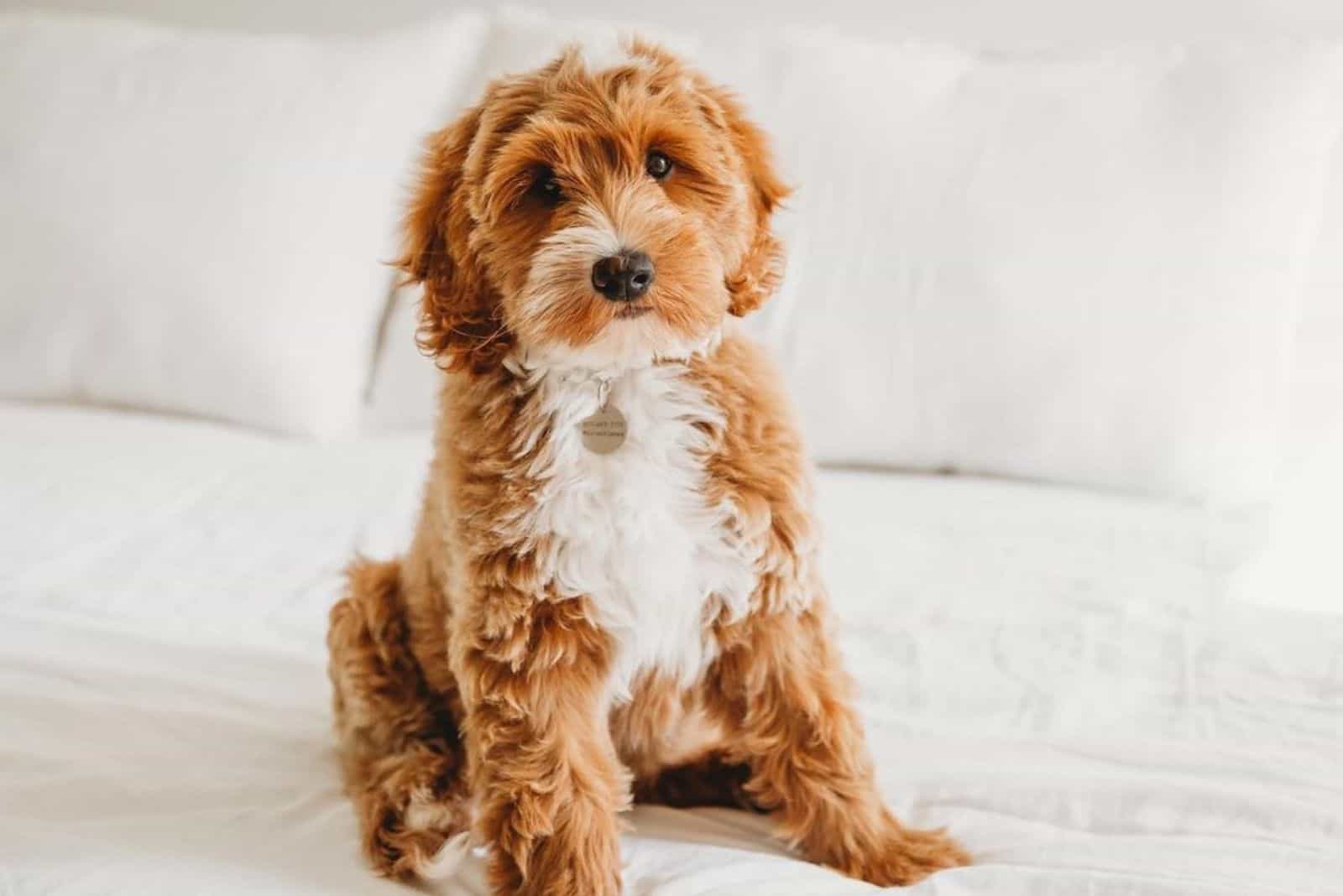Poodle mixes are becoming more and more popular, surpassing even some traditionally well-liked purebred dogs. The most popular among them are Goldendoodles and Australian Labradoodles, so why not combine them and get the ultimate Doodle out there?
Well, that’s what the Australian Goldendoodle is; the perfect combination of its parents’ highly prized traits.
These fluffy pooches have been turning heads and charming people wherever they go. You might even decide to get one for yourself by the end of the article. If you’re curious about what makes them so irresistibly adorable, read on and find out!
What Is An Australian Goldendoodle?
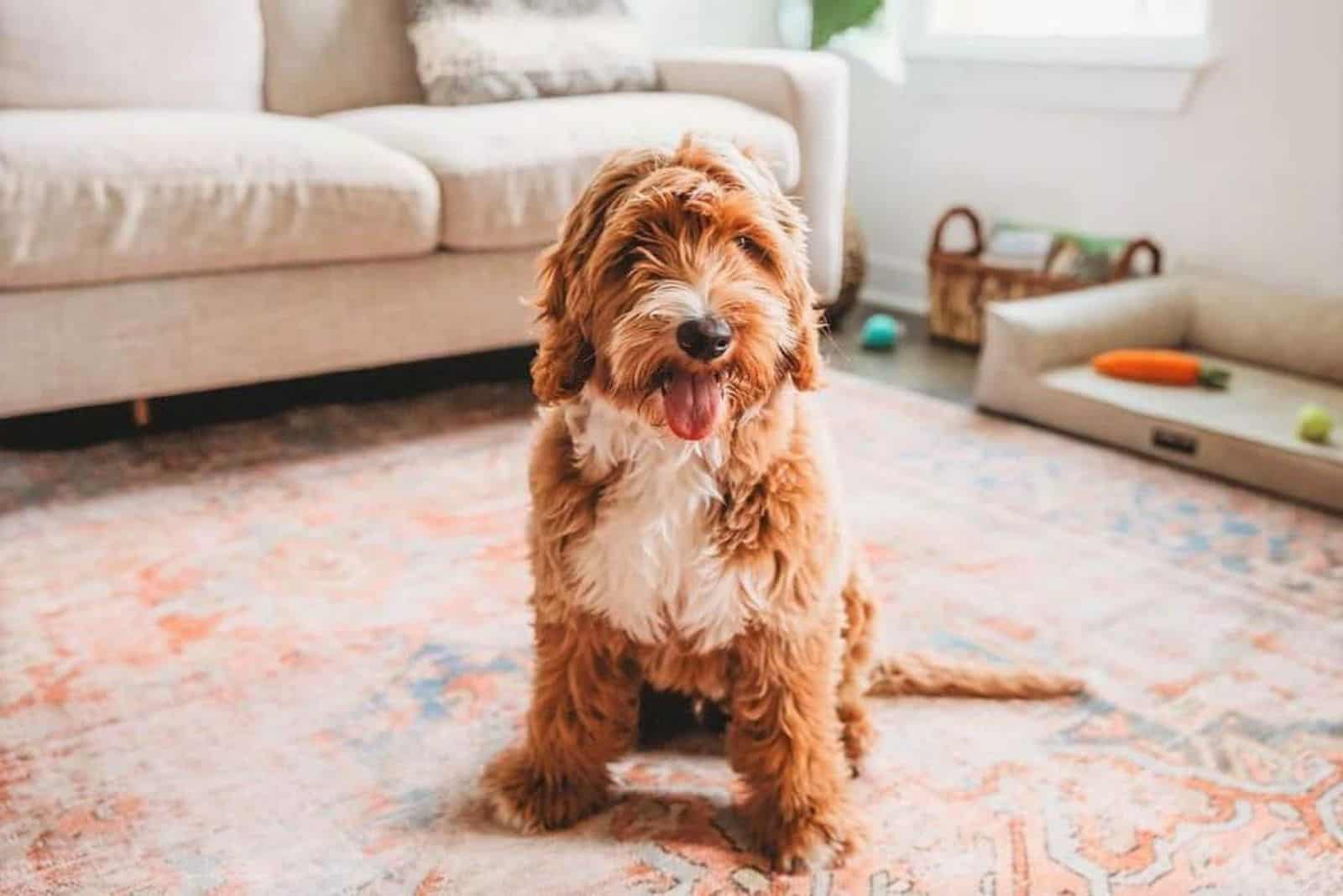
An Australian Goldendoodle is a cross between an Australian Labradoodle and an English Goldendoodle. They are a mix of different Poodle mixes, so some also call them Double Doodles.
As designer dogs, they were intentionally bred to combine the desirable characteristics of two dog breeds. These pups are not recognized as purebreds by major kennel organizations, but they’re certainly recognized as amazing pets by thousands of dog owners.
The popularity of designer dogs has been continuously rising for the last four decades. Different types of Doodles are the most popular among them, particularly Goldendoodles and Labradoodles.
Although original Labradoodles came from Australia, there are some differences between them and the dogs we call Australian Labradoodles.
The main difference is that the Australian Labradoodle has more than just Poodle and Labrador Retriever genes. They can also have the English and American Cocker Spaniels, Irish Water Spaniels, and Curly-Coated Retrievers in the mix.
The Australian Goldendoodle’s other parent, the English Goldendoodle, comes from breeding an English Golden Retriever with a Poodle.
Some people also confuse Australian Goldendoodles with Aussiedoodles, but an Aussiedoodle is a cross between an Australian Shepherd and a Poodle.
If your Australian Goldendoodle is your first-ever dog, then you probably don’t really know what sort of things you need. Don’t worry, we’ve got you covered. We’ve found the best food, bed, brush, etc. choices an Aussie Goldendoodle may love!
[table id=200 /]
The Australian Goldendoodle Vs Goldendoodle Vs Australian Labradoodle
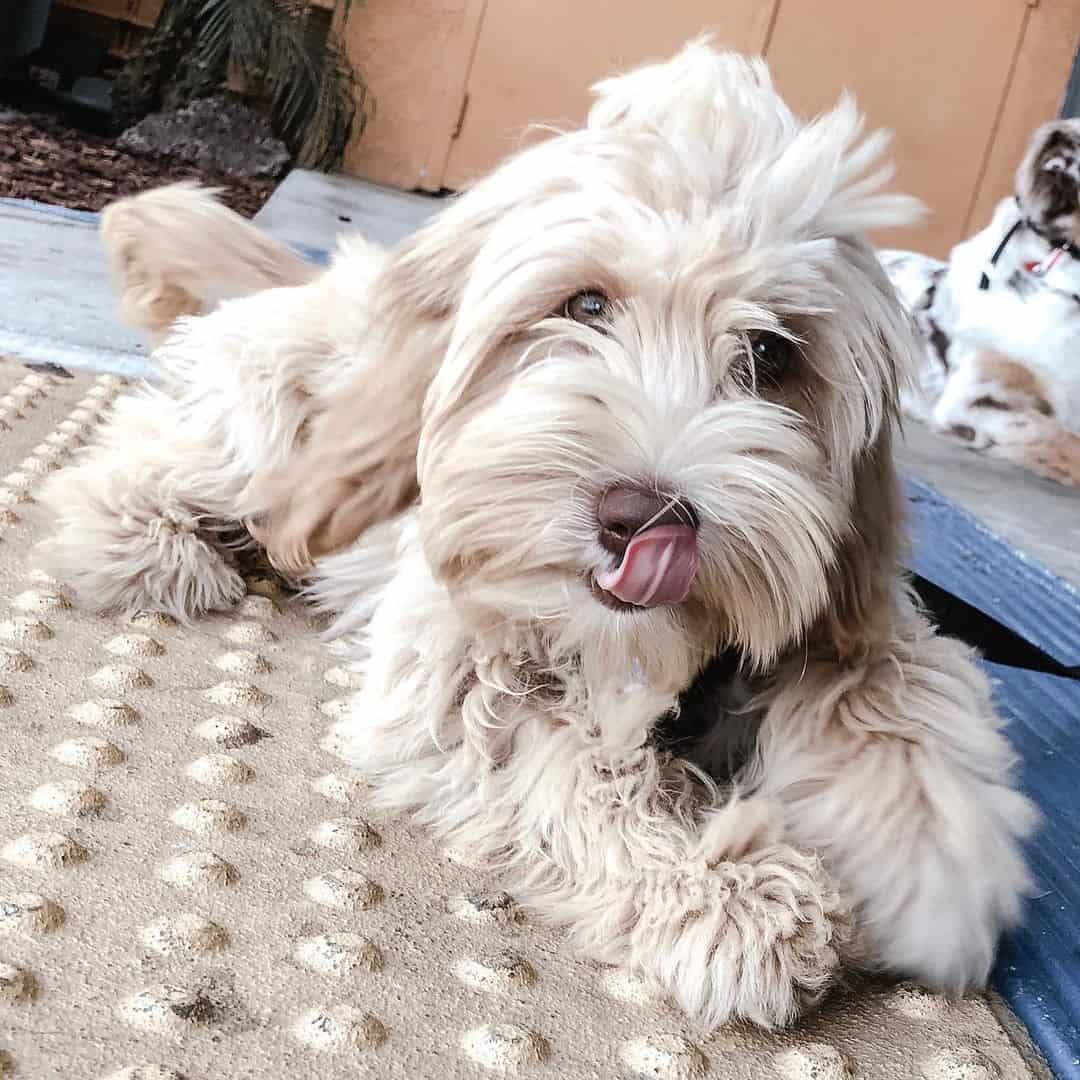
Photo from @thepuppyacademy
The Doodle craze has resulted in many interesting crosses, from Cavoodles, Maltipoos, and Sheepadoodles to Bernedoodles and Goldendoodles. There are over forty Poodle mixes out there and they all seem to have fun names.
Although these names are fun to pronounce, they can also be a bit confusing. It’s no wonder that many people can’t tell the Australian Goldendoodles, Goldendoodles, and Australian Labradoodles apart. So, let’s clear the confusion once and for all.
The main difference between these three dogs is their genetic make-up. The Goldendoodle is a cross between a Poodle and a Golden Retriever while the Australian Labradoodle is a mix of a Poodle, a Labrador, and a few other dog breeds. When you cross these two pups, you get an Australian Goldendoodle.
They all come in different sizes and coat colors. However, Australian Labradoodles tend to conform to a standard set by the Australian Labradoodle Association while the other two crosses are more unpredictable.
Australian Goldendoodles and Labradoodles are more likely to inherit the low-shedding coat characteristics since they are multigenerational Doodles.
The price range of all three breeds is similar, but Australian Goldendoodles can cost more on average.
They’re all adorable pups with friendly personalities and irresistible teddy bear appearances. So, whichever one you decide to get, you won’t regret it.
Australian Goldendoodle Generations

If you’re new to Doodles, you’re probably confused by all the letters and numbers you see alongside their names on the internet. So, let’s first clarify what they mean.
The F1 Doodles are the first generation pups that came into existence by crossing two different breeds. The F2 or the second generation dogs came from breeding two F1 Doodles, and the F3 mixes are multigenerational.
The letter ‘b’ that you sometimes see in these descriptions stands for backcross, meaning the crossbreed was bred back with one of the parent breeds.
The F1 Australian Goldendoodle is usually created by breeding an F1 Goldendoodle with an F1 Australian Labradoodle. This ensures that the hybrid vigor of the first-generation Goldendoodles and Australian Labradoodles is carried onto their offspring.
Backcrossing Australian Goldendoodles is a bit more complicated than with other Poodle mixes since they have the genes of more than two dog breeds.
The F1b or F2b Australian Goldendoodle is backcrossed with a Goldendoodle, a Poodle, or an Australian Labradoodle. Those crossed with a Golden Retriever or a Labrador Retriever are considered to be different hybrid dogs.
Physical Characteristics Of Australian Goldendoodles
Australian Goldendoodles come in different sizes, depending on the Poodle genes of their parent breeds. Their height ranges from 17 to 24 inches while their weight can be between 15 and 80 pounds.
The reason for this wide range of sizes is the fact that there are Toy, Miniature, and Standard Poodles.
Their coats can be curly and wool-textured like Poodles. Pups with this coat type are more allergy-friendly since they shed less. They can also have wavy or straight fleece-textured coats.
The hair length depends on their genetic make-up. Goldendoodles tend to have slightly longer hair compared to Australian Labradoodles.
Australian Goldendoodles come in a variety of colors, from white, cream, and gold, to apricot, red, or black. Some are of solid color while others have different markings, such as parti, abstract, or phantom.
Facial hair is in style, and Australian Goldendoodles are following the trend. Their adorable mustache, known as furnishings, gives them a distinct teddy bear look. The furnishings, alongside their shaggy-looking coats and floppy ears, make these pooches irresistible.
Mini Australian Goldendoodle
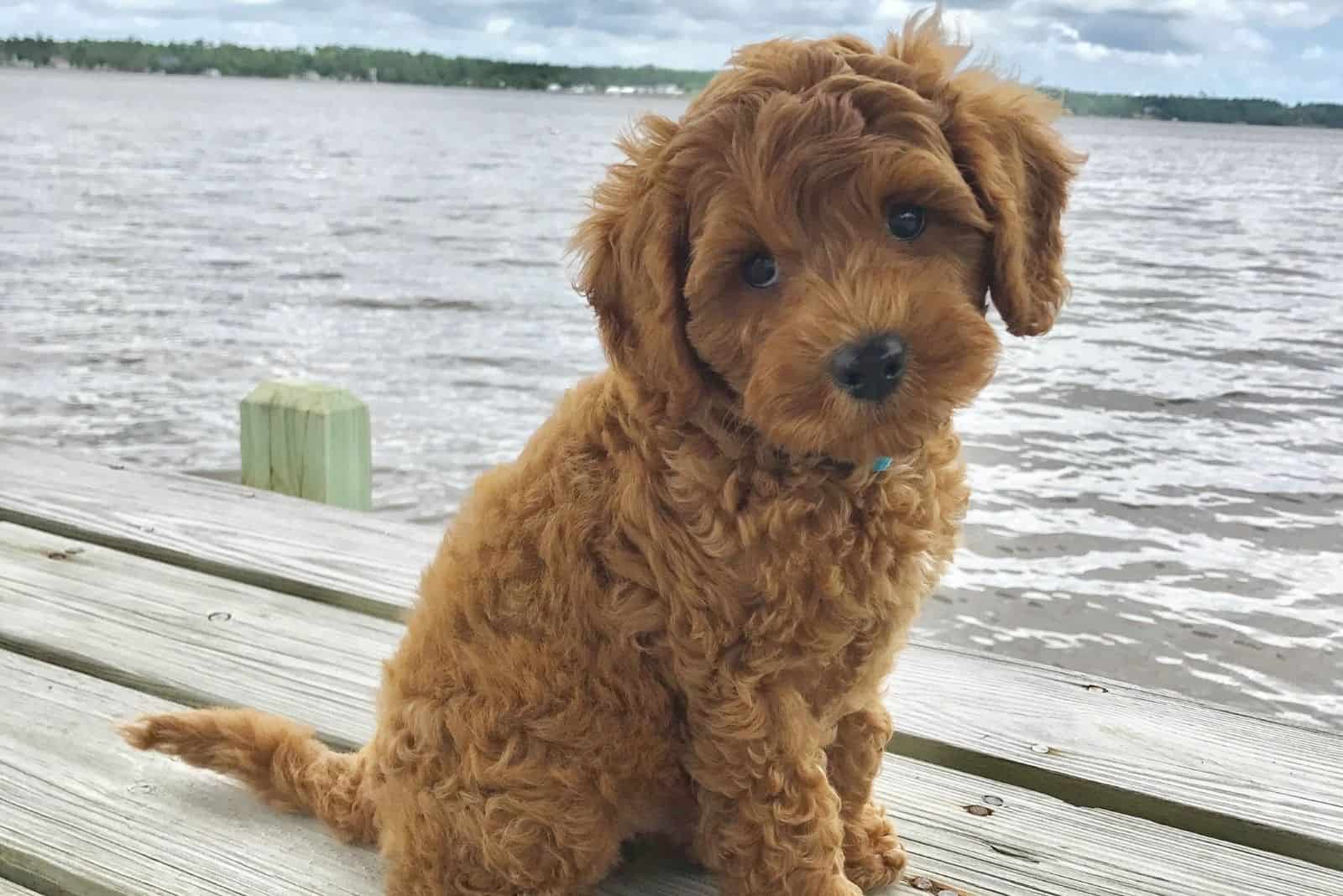
A Mini Australian Goldendoodle is the result of crossing a Mini Goldendoodle with a Mini Australian Labradoodle. They are small- to medium-sized dogs, weighing between 20 and 30 pounds, with a height of 16 to 19 inches.
Poodles come in three different sizes; Toy, Miniature, and Standard. The small stature of Mini Doodles comes from the genes of their Miniature Poodle ancestors.
The main difference between Mini and other Australian Goldenpoos is their size. They are the same as their larger cousins when it comes to other physical and personality traits.
However, they need less exercise since the Miniature Poodle was primarily bred for companionship rather than for hunting like the Standard type. About 30 minutes of exercising a day should be enough to tire out these tiny pups.
Do Australian Goldendoodles Shed?
Australian Goldendoodles tend to be low-shedders. They’ve got more Poodle genes in them, so they’re more likely to inherit the curly, hypoallergenic coats than other Doodles.
The phrase ‘hypoallergenic dog’ is used to describe dogs that cause fewer allergenic reactions. There’s no such thing as a completely non-shedding dog, but some dog breeds shed minimally, making them perfect companions for allergy sufferers.
With the increase of pet allergies in recent times, the demand for pups with low-shedding tendencies is on the rise. That’s one of the things that makes Poodles and their mixes so popular.
Whether you’re living with someone who’s allergic to pet dander and hair, or you just don’t want to do the extra cleaning, the Australian Goldendoodle is a great choice for a pet.
Australian Goldenpoos with straight or wavy fleece-textured hair typically shed more than their curly-coated counterparts. However, the shedding can still be managed by proper grooming.
Apart from genetics, other factors impact the amount of shedding in dogs as well. If your pup is shedding excessively, it may be due to stress, nutrition, health, or too much bathing.
Grooming Requirements
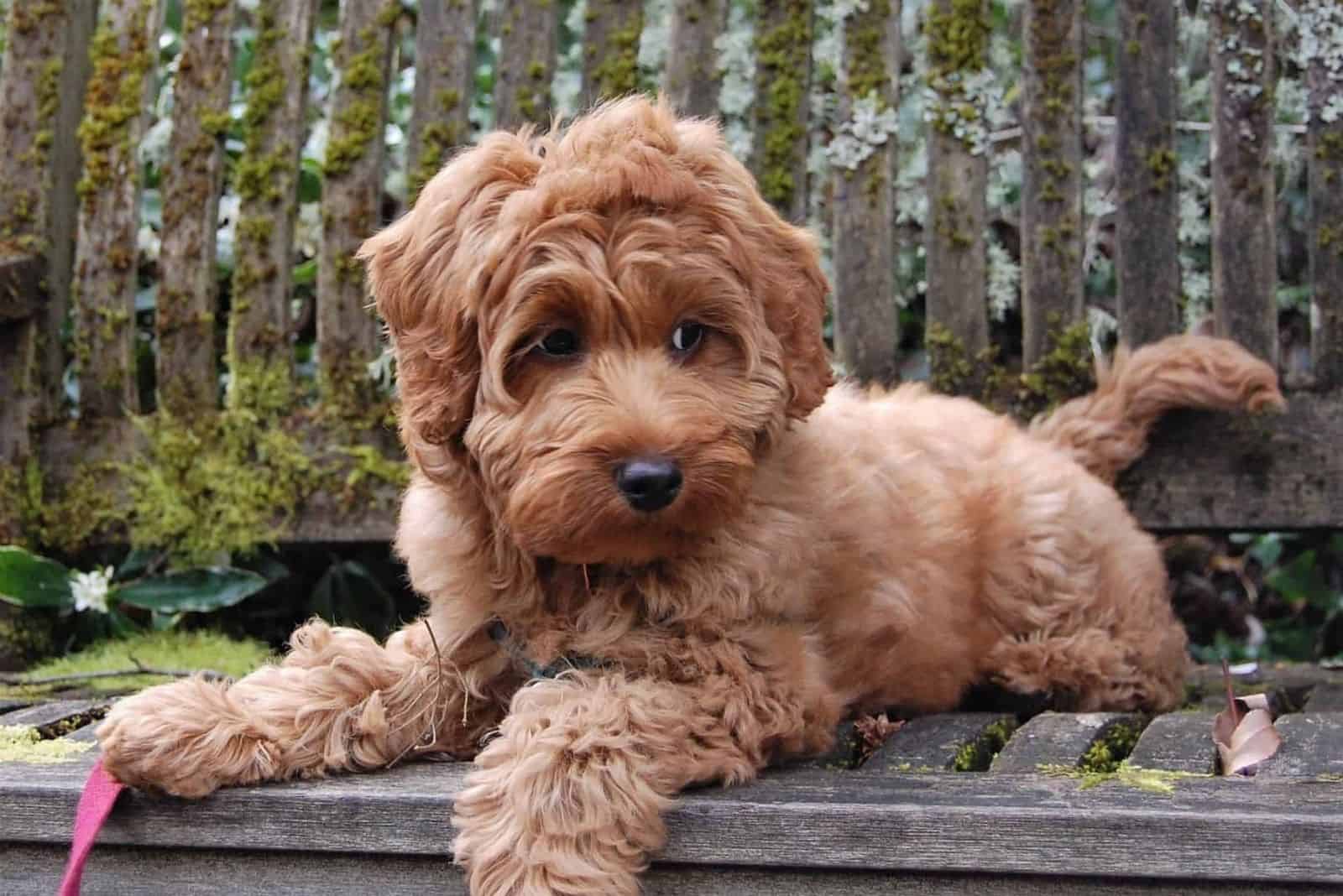
The Australian Goldendoodle is a high-maintenance crossbreed. The curly coats that make them shed minimally can easily get tangled or matted, which is why they require regular grooming. The grooming includes brushing and trimming their hair, bathing, teeth brushing, cleaning their ears, and trimming their nails.
You’ll need to brush their fur daily to prevent mats and tangles from forming. Their continuously growing hair also needs to be trimmed regularly. Most owners take their pups to a professional groomer every six to eight weeks.
They shouldn’t be bathed too often as frequent bathing washes away a dog’s natural body oils and dries out its skin. Be sure to use a gentle dog shampoo since some bathing products can cause excessive shedding.
Australian Goldendoodles are prone to ear infections due to their long, floppy ears, which is why it’s important to incorporate regular ear cleaning in their grooming sessions. You can inspect their ears weekly and use a soft cotton ball to gently clean them. Their teeth also need to be brushed once a week to prevent tartar build-up and gum disease.
Their nails should be clipped once a month unless they naturally wear down. If you’re too scared to hurt them by clipping their nails yourself, you can let the groomer do the job. On the other hand, if you’d like to take this task upon yourself, be extra careful not to cut into their nerve endings.
Personality Traits
A cute appearance isn’t the only thing that makes Australian Goldendoodles popular; they also have great personalities. What else could be expected when you’ve got friendly Golden Retrievers, gentle Labradors, and intelligent Poodles in the mix.
The Australian Goldendoodle is an affectionate, loving dog that loves to spend time with its owner. They are great family pets as they get along with other animals and children. However, young children shouldn’t be left unsupervised with this dog as it can accidentally knock them down during play.
Australian Goldendoodles can easily be trained for a variety of tasks due to their high intelligence. They’re known to be great service dogs, helping humans live easier lives. In fact, their Labradoodle parents were first created to be guide dogs for people with pet allergies.
Many of these sweet-natured pups also work as therapy dogs, bringing happiness and comfort to people in hospitals and retirement homes.
Australian Goldenpoos are very energetic and playful as well. They love to snuggle up on the couch, but they’re always ready for some playtime. These easy-going dogs will gladly accompany you wherever you go, whether it’s a stroll around the neighborhood or a hike in the mountains.
Exercise Needs
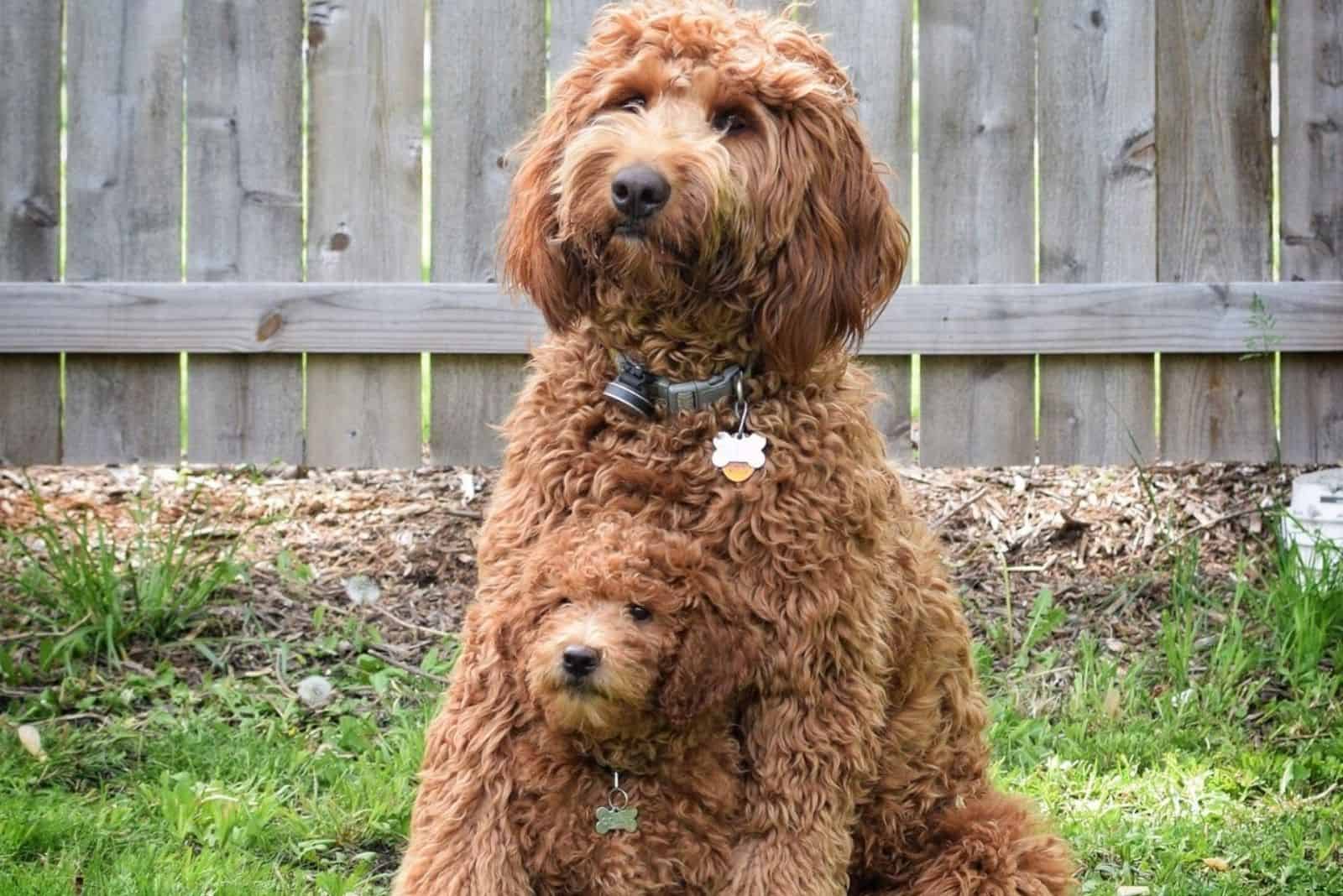
Australian Goldendoodles are active dogs. They need at least an hour of activity a day, so they’re not the best choice for people who don’t have enough time to take care of their exercise needs.
Making sure that your dog gets enough exercise and mental stimulation can prevent weight problems and behavioral issues. It also reduces the possibility of injuries as it strengthens their muscles.
If you decide to get an Australian Goldendoodle puppy, you need to keep in mind that puppies and adult dogs don’t have the same exercise requirements.
It’s better to take shorter walks and introduce a lot of playtime at home while your puppy is young. Puppies learn about the world through play, but it also helps build your relationship.
As your puppy grows up, you can start taking it out for long walks or let it join you for a run. Australian Goldenpoos love being outside, so going for a hike once in a while is a great way to spend some quality time with your pooch.
They also do great with different dog sports, such as dog agility or flyball. These sports would be fun hobbies to share with your pup.
How To Train An Australian Goldendoodle
An Australian Goldendoodles’ obedient temperament and intelligence makes it a highly trainable dog. There’s no reason to worry about training them, even if you’re a first-time owner.
Positive reinforcement is always the best training method regardless of the breed. Your puppies will happily learn any new trick when you give them enough treats, praise, or tummy rubs. It’s also important to start training your pooch early as dogs learn best while they’re young.
The first steps you’ll need to take once you bring a new puppy home are house training, leash training, potty training, and crate training.
House training means letting the dog know what your house rules are. Show them where it’s okay to sleep and do their business and what’s off-limits. Puppies love to chew, so surrounding them with toys could help save your shoes.
You’ll also need to teach your pup basic obedience commands like come, sit, stay, or respond to their name. Australian Goldendoodles are usually at the top of the class in obedience school, so this won’t take too much effort.
Another essential part of dog ownership is socialization. Although Australian Goldendoodles are friendly by nature, they still need to be socialized. What you need to do is bring your pup around with you to meet different people, dogs, and other animals.
With proper training and early socialization, you’ll have a confident dog that’s comfortable in different environments by the time it grows up.
Lifespan And Common Health Issues
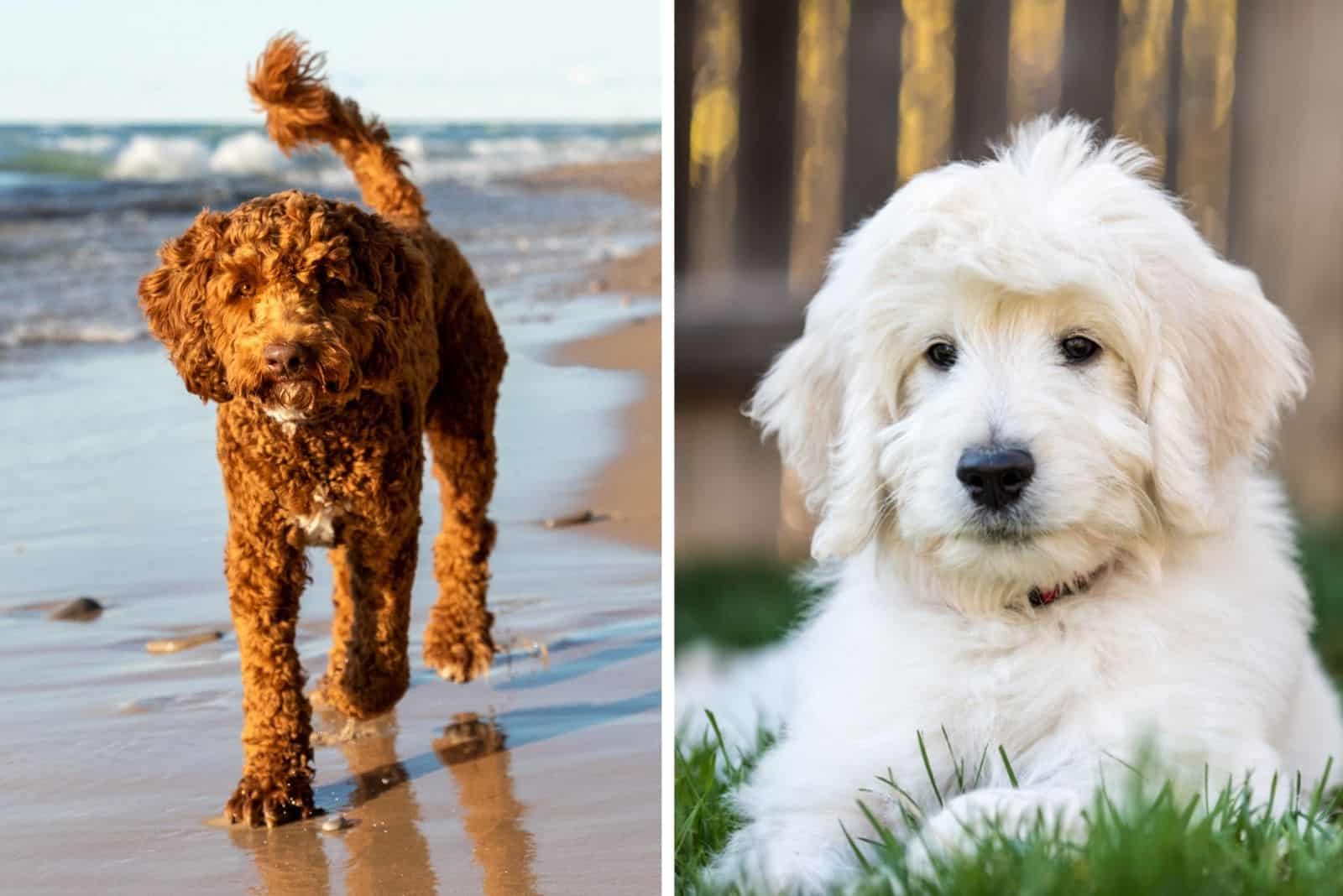
The average lifespan of Australian Goldendoodles is between 10 and 15 years. Smaller dogs generally have a longer life expectancy. That’s why Mini Australian Goldendoodles have a slightly longer lifespan than their standard-sized cousins. They typically live between 12 and 16 years.
These mixed-breed pooches are generally healthy dogs, but there are some health problems they can inherit from their parents. The most common are:
• Hip dysplasia
• Addison’s disease
• Hypothyroidism
• Progressive retinal atrophy
• Patellar luxation
• Aortic stenosis
Hip dysplasia affects many dog breeds. It’s a condition where the hip joint doesn’t function properly, causing limping, lameness, and difficulty running, jumping, or climbing stairs.
Many Poodle mixes are prone to Addison’s disease or hypoadrenocorticism. Dogs suffering from this disease can’t produce enough of the natural stress hormone, cortisol. The symptoms include weight loss, diarrhea, vomiting, and increased urination.
Hypothyroidism is a condition in which the thyroid glands don’t produce enough thyroid hormones, which results in weight gain, lack of energy, and the dog’s hair falling out.
Progressive retinal atrophy is a genetic eye disease that affects the photoreceptor cells. The dog’s vision degenerates over time, eventually leading to complete blindness.
Patellar luxation is a condition characterized by recurrent dislocation of the dog’s kneecap. It can lead to arthritis and cause a lot of pain for the pup when it’s not treated early.
Aortic stenosis is a heart defect that some Goldendoodles inherit from their Golden Retriever ancestors. Dogs with this condition have a narrowed aortic valve, so their heart has to work harder to pump blood.
What Is The Average Price Of A Goldendoodle?
Australian Goldendoodles, or any Doodle for that matter, aren’t cheap pups. They usually cost around $3,500, but prices vary depending on the lineage, breeder, location, and sometimes the size and coat color.
Their parent breeds aren’t cheap either. The Australian Labradoodle puppy can cost between $2,500 and $3,600 while the Goldendoodle puppy’s price ranges from $2,000 to $3,800.
The main reason why these mixed breeds are so expensive is that they’re produced through careful breeding. Many reputable breeders test the health of sires and dams to avoid heritable diseases in their puppies. Some breeders even do coat genetics tests to ensure that their litters will be born with hypoallergenic coats.
Rare and multicolored dogs, like merle and phantom Australian Goldendoodles, usually cost more. The size also makes a price difference. Mini- and toy-sized Australian Goldendoodle puppies can cost up to $5,000.
You’ll also need to consider the cost of owning a dog, which is around $300 monthly. The expenses are the biggest in the first year of your new puppy’s life since you need to buy all the things your dog needs.
Australian Goldendoodle Breeders
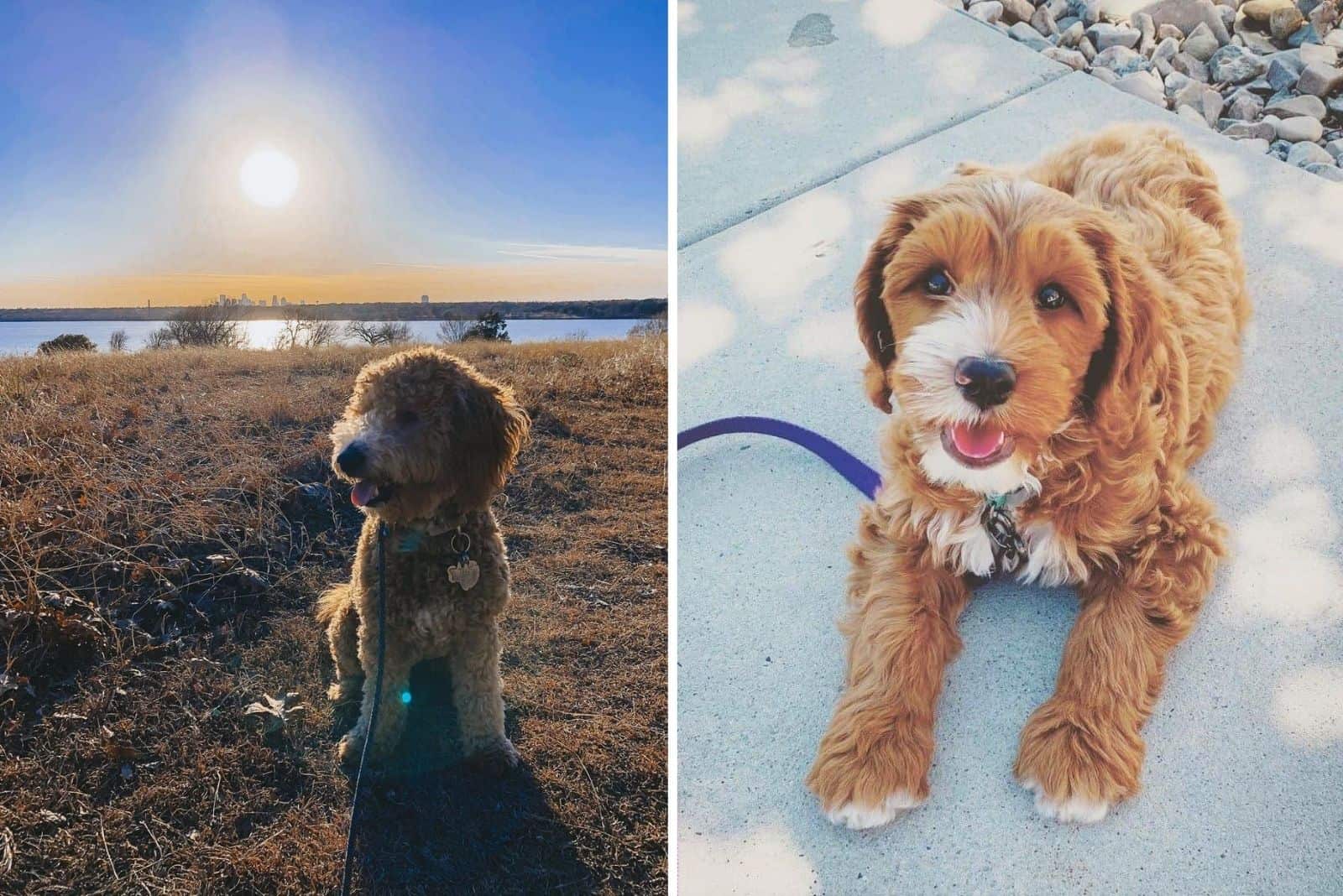
Once you decide to get an Australian Goldendoodle puppy, the next step is finding a breeder. Finding a good breeder is as important as choosing the right dog for yourself.
Getting a pup from a reputable breeder will not only ensure that you end up with a healthy pup, but it’s also the best way to support responsible breeding instead of the puppy mill industry.
There are a few different ways to look for trusted breeders in your area. If you know someone who has an Australian Goldendoodle, you can ask them about their experience.
You can also ask a veterinarian or a dog trainer for advice. They probably have some inside information since they work with all sorts of dogs daily.
Of course, the internet is always there to help us out with any information we need. The Goldendoodle site has a list of owner-recommended Goldendoodle, Labradoodle, and Bernedoodle breeders around the world.
Only breeders who test the health of their breeding stock, provide owner-friendly health warranties, and have a good reputation can make the list.
A good breeder will let you meet your pup’s parents, provide you with their medical history, and happily answer any questions you have. They also don’t produce too many litters a year, so you’ll need to be patient and wait for your new puppy for a couple of months.
Final Thoughts
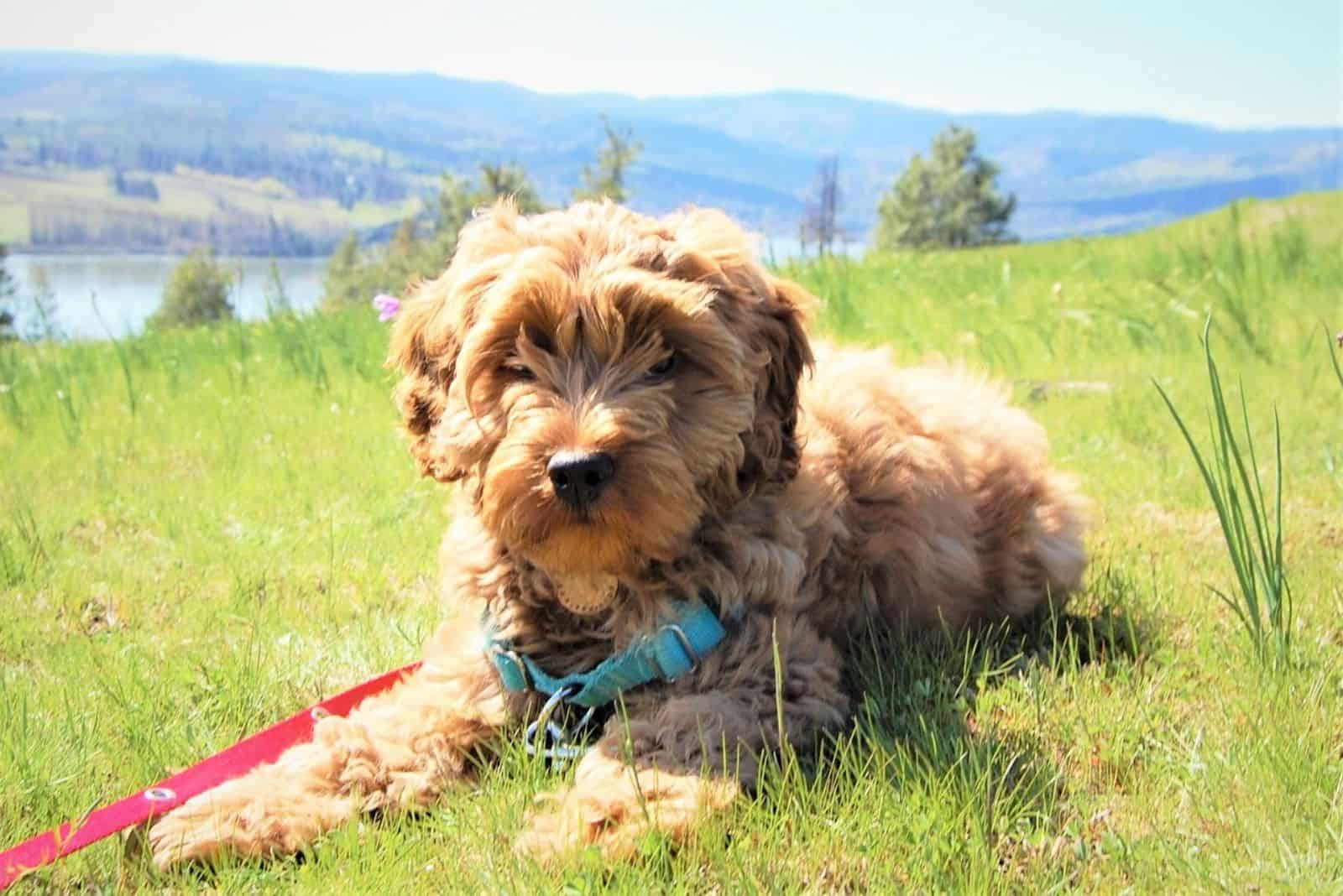
The list of traits that make Australian Goldendoodles great family companions is endless. Their charming looks and friendly personalities turn anyone who comes across them into a fan.
If you’d like to get one for yourself, it’s good to know that they come in a variety of sizes and colors to match your preference. They are perfect pets for dog lovers who suffer from dog allergies or live with someone who does.
You will, however, need to invest some time in grooming these curly-coated pooches. Grooming your pup is more enjoyable than cleaning after its hair, so it won’t be a hard task.
Australian Goldenpoos also get along with other animals and children, especially when they’re socialized and trained early on. Their hunting instinct isn’t strong, so you don’t have to worry about your cats getting chased.
These intelligent, loyal pups quickly pick up any tricks, so training them isn’t hard. You can teach them all the fun tricks like ‘’play dead’’ or ‘’roll over’’ to impress your friends.
If you would like to volunteer and help out in the community, you can let your pup become a certified therapy dog. Their calm, friendly temperament makes them perfect for the job.
We can go on about what makes them great pets, but you’re probably already convinced. If you decide to get an Australian Goldendoodle puppy, you’re in for an exciting and joyful journey.
